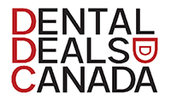Strategies for Efficiently Managing Patient Flow in a Dental Clinic
Managing patient flow is crucial for a dental clinic's success in providing quality care while maintaining operational efficiency. From the initial interaction to the checkout process, each step is vital in optimizing the patient experience. In this blog post, we will explore strategies for effectively managing patient flow, ensuring a seamless journey for individual patients and the overall scheduling flow of the clinic.
1. The First Interaction: Collecting Information and Creating a Positive Impression
During the initial interaction, whether it's a phone call or an online inquiry, it is essential to collect comprehensive patient information. Front office staff should gather demographic details, the reason for the visit, and any specific concerns or requirements. This information allows the dental team to prepare adequately and deliver personalized care. Additionally, the first interaction sets the tone for the patient's experience, so it's crucial to create a positive impression by being friendly, attentive, and professional.
2. Before the Appointment: The Importance of Reminders
To optimize patient flow, it is essential to minimize appointment no-shows or last-minute cancellations. Sending appointment reminders through phone calls, text messages, or email notifications can significantly reduce the likelihood of missed appointments. Clear and timely reminders help patients remember their scheduled visits, enabling the clinic to maintain a consistent flow and allocate resources efficiently.
3. Day of the Appointment: Additional Information and Warm Welcome
On the day of the appointment, the front office team should gather any outstanding information from the patient, such as insurance details or medical history updates. This allows the clinical team to have the necessary information readily available, avoiding any delays or disruptions during the appointment. A warm and friendly welcome further contributes to a positive patient experience, helping to alleviate any nervousness or anxiety.
4. The Appointment: Personalized Care and Attention
During the appointment, providing personalized care and attention is crucial for patient satisfaction. Dentists, hygienists, and assistants should take the time to listen to the patient's concerns, address their questions, and explain the procedures involved. By fostering open communication and building rapport, dental professionals can create a comfortable environment for patients, enhancing their overall experience and trust in the clinic.
5. Checkout: Inquiring, Scheduling, and Ensuring Continuity of Care
The checkout process is an opportunity to gather feedback, address any remaining questions or concerns, and schedule follow-up appointments. Front office staff should inquire about the patient's experience, ensuring that their needs were met and any issues resolved. Offering prompt and efficient scheduling options for future visits helps maintain the continuity of care and ensures that patients receive timely treatment and preventive services.
Optimizing Scheduling Flow:
In addition to managing individual patient flow, optimizing the scheduling flow of all patients is crucial for a dental clinic's efficiency. Some strategies to consider include:
- Implementing a well-designed scheduling system that accounts for different appointment types, durations, and the availability of dental professionals.
- Analyzing historical data to identify peak and low-demand periods, allowing for appropriate appointment spacing and resource allocation.
- Utilizing scheduling software or tools that enable efficient appointment management, automate reminders, and provide real-time updates for both patients and staff.
- Regularly reviewing and optimizing the scheduling process based on patient feedback, staff input, and industry best practices.
Effectively managing patient flow is essential for a dental clinic to provide high-quality care, maintain patient satisfaction, and optimize operational efficiency. By focusing on the first interaction, timely reminders, warm welcomes, personalized care during appointments, and efficient checkouts, clinics can create a positive patient experience from start to finish. Additionally, optimizing the scheduling flow ensures that the clinic operates smoothly and maximizes resource utilization. Through these strategies, dental practices can enhance patient satisfaction, build strong relationships, and achieve sustainable growth and success in their operations.
Remember, managing patient flow is an ongoing process that requires continuous evaluation, refinement, and adaptation to meet the changing needs and demands of both patients and the clinic. By implementing these strategies and prioritizing the seamless flow of patients, dental clinics can create a positive and efficient environment that enhances the overall patient experience.

